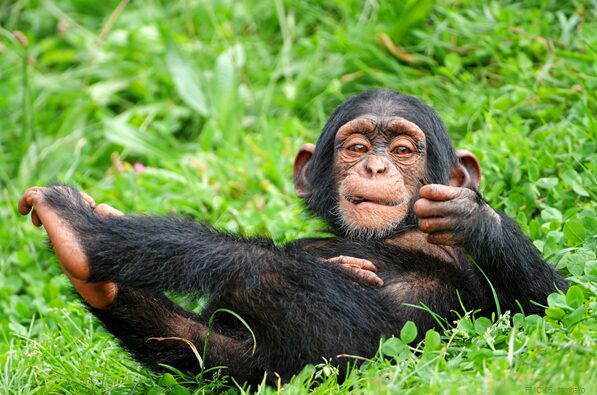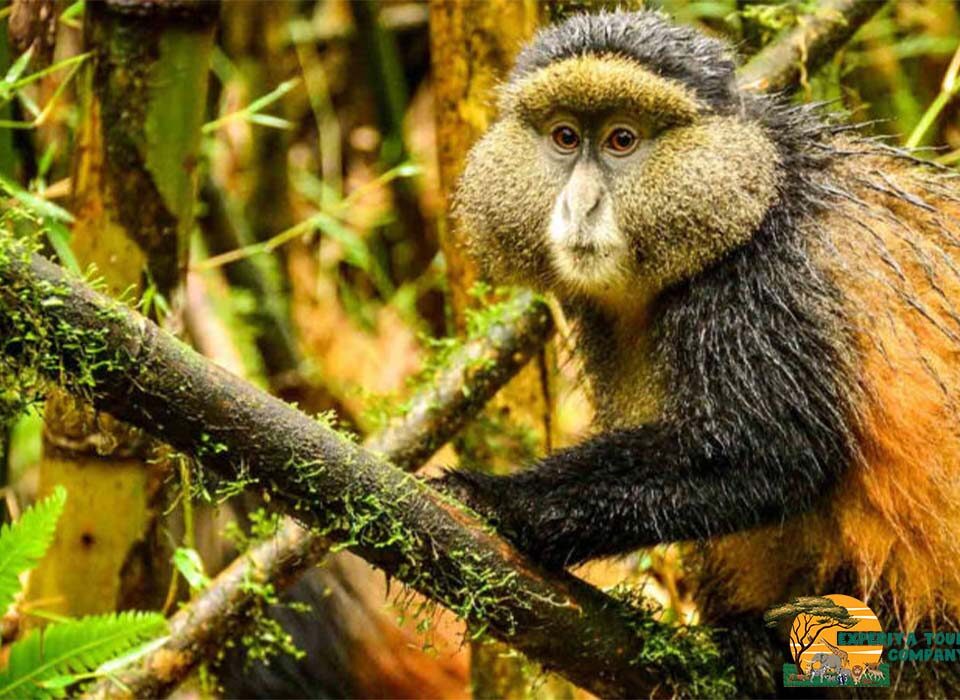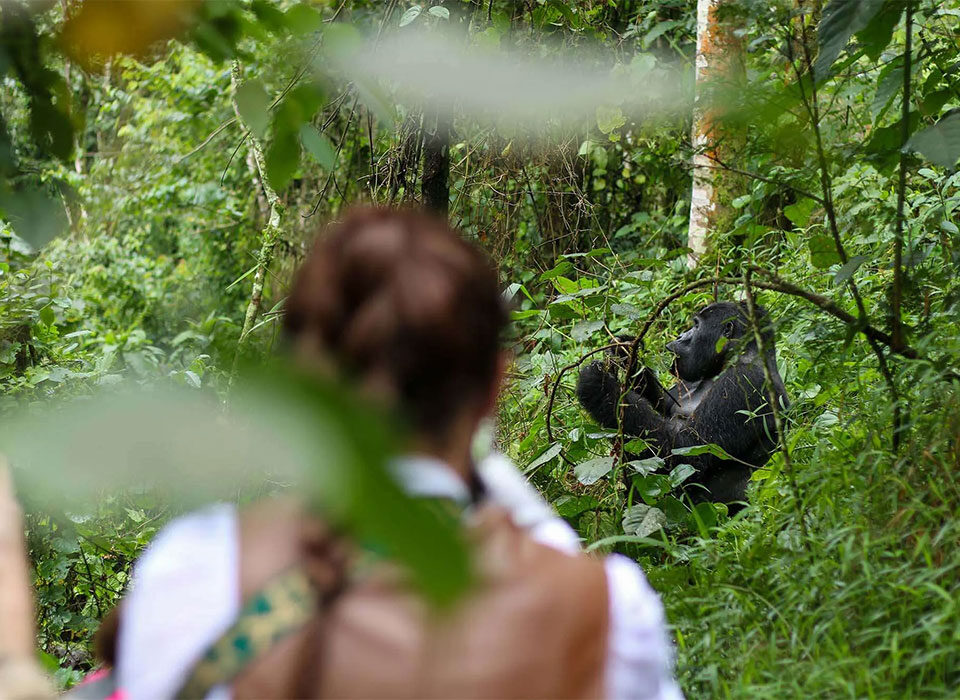
Where Can I Track Chimpanzees in Uganda? | Uganda Safari Guide
October 24, 2025How Much Is a Chimp Tracking Permit in Uganda? | Uganda Safari Guide
October 24, 2025What’s the Difference Between Kibale and Budongo Forests? | Uganda Safari Guide

What’s the Difference Between Kibale and Budongo Forests?
Uganda is often celebrated as the Primate Capital of the World — and for good reason. This small but incredibly diverse East African country is home to some of the continent’s most remarkable forests, teeming with wildlife, ancient trees, and breathtaking biodiversity. Among these, Kibale Forest and Budongo Forest stand out as two of the most iconic and rewarding destinations for nature lovers, birdwatchers, and primate enthusiasts alike.
Both forests are renowned for chimpanzee tracking, but they each offer distinct experiences shaped by their geography, wildlife density, atmosphere, and accessibility. Whether you’re planning your first primate trek or trying to decide which forest best suits your travel style, understanding the key differences between Kibale and Budongo will help you make the right choice.
In this blog, we’ll explore these two stunning rainforests in depth — their locations, landscapes, wildlife, and what makes each one unique.
An Overview: Two Jewels of Uganda’s Forest Belt
Kibale and Budongo are part of Uganda’s western rainforest ecosystem, which stretches along the Albertine Rift Valley — one of Africa’s richest biodiversity regions. Despite their shared ecological importance, each forest offers a very different kind of safari experience.
Kibale National Park is famous for its dense tropical rainforest, high primate population, and exceptional chimpanzee trekking success rates. It’s located in western Uganda near Fort Portal and is often considered the best place in East Africa to see chimpanzees up close.
Budongo Forest Reserve, on the other hand, lies at the edge of Murchison Falls National Park, Uganda’s largest protected area. Known for its towering mahogany trees and serene ambiance, Budongo offers a quieter, more intimate chimpanzee tracking experience, often combined with classic savannah safaris in Murchison Falls.

Let’s break down the differences between these two forests in detail.
1. Location and Accessibility
Kibale Forest National Park is situated in western Uganda, about 320 kilometers from Kampala and 36 kilometers from Fort Portal town. The drive from Kampala to Kibale typically takes around 5–6 hours, passing through scenic countryside, tea plantations, and small villages. The park’s accessibility from Fort Portal makes it an easy stop on most southwestern safari circuits that include Queen Elizabeth National Park and Bwindi Impenetrable Forest.
Budongo Forest Reserve lies in northwestern Uganda, roughly 4 hours from Kampala and just south of Murchison Falls National Park. It forms part of the greater Murchison Falls Conservation Area and is therefore ideal for travelers who want to combine chimpanzee tracking with game drives, boat cruises on the Nile, and the spectacular Murchison Falls themselves.
In essence, Kibale suits travelers exploring western Uganda’s rainforest and gorilla circuit, while Budongo is perfect for those heading north toward Murchison Falls for a classic savannah experience.
Verdict: Kibale is slightly farther but well-positioned for multi-park itineraries, whereas Budongo is easier to reach if your safari focuses on northern Uganda.
2. Size and Habitat Differences
Kibale National Park covers approximately 795 square kilometers, making it a large and diverse ecosystem that includes both dense tropical rainforest and patches of grassland and swamp. The altitude ranges from 1,100 to 1,600 meters above sea level, creating a cool, moist climate that supports a lush, evergreen canopy. Kibale’s forest is thicker and wetter than Budongo’s, giving it a more “jungle-like” feel.
Budongo Forest, on the other hand, spans about 825 square kilometers and is Uganda’s largest natural mahogany forest. The terrain is relatively flat, and the vegetation is more open compared to Kibale, with giant mahogany, ironwood, and fig trees dominating the landscape. The forest is part of a transition zone between savannah and rainforest, which means it receives less rainfall and sunlight filters more easily through the canopy.
Verdict: Kibale feels denser and more tropical, ideal for those who want a true rainforest experience, while Budongo’s semi-deciduous forest provides easier trekking conditions and a more open, serene atmosphere.
3. Chimpanzee Populations and Trekking Experience
When it comes to chimpanzee tracking, both Kibale and Budongo offer exceptional opportunities — but with notable differences.
Kibale is home to over 1,500 chimpanzees, the highest density in Uganda, and possibly in all of East Africa. Several communities have been habituated for tourism, giving visitors an excellent chance — over 95% success rate — of finding and spending time with them.
Tracking in Kibale begins at the Kanyanchu Visitor Centre, where guides lead small groups deep into the rainforest in search of the chimpanzees. The trek usually lasts 2–4 hours, depending on their location, and once found, visitors spend one hour observing them as they feed, groom, and interact.
For those who want a more immersive experience, Kibale also offers the Chimpanzee Habituation Experience (CHEX), a full-day adventure that allows guests to follow a semi-habituated troop from morning until evening — watching their daily activities and learning about primate behavior in detail.
Budongo Forest, meanwhile, hosts around 700–800 chimpanzees, with one main community of about 100 individuals in the Kaniyo Pabidi area habituated for visitors. While the numbers are smaller, sightings are still very reliable, especially during the dry season. Treks here are generally less strenuous due to flatter terrain, and the forest’s openness makes it easier to view chimps once located.
The experience in Budongo feels more tranquil and personal, with fewer visitors compared to Kibale. The guides are highly knowledgeable, and the forest’s quiet atmosphere adds to the sense of discovery and connection with nature.
Verdict: Kibale offers higher chimpanzee densities and near-guaranteed sightings, while Budongo provides a calmer, less crowded, and more accessible experience.
4. Other Wildlife and Biodiversity
Both forests are havens for biodiversity, but they differ slightly in the variety and concentration of species.
Kibale is famous not only for chimpanzees but also for its 12 other primate species, including black-and-white colobus monkeys, red colobus monkeys, olive baboons, L’Hoest’s monkeys, and grey-cheeked mangabeys. It’s truly a primate lover’s paradise. The park also shelters over 375 bird species, 70 mammal species, and more than 200 butterfly species.
Budongo Forest, though not as diverse in primate species, is a paradise for birdwatchers. It’s home to over 360 bird species, including the rare Puvel’s illadopsis, which is found nowhere else in East Africa. The forest also supports blue monkeys, black-and-white colobus monkeys, duikers, and forest elephants.
Verdict: Kibale wins for primate diversity and overall density of wildlife, while Budongo excels in birdwatching and offers a peaceful, scenic escape for nature enthusiasts.
5. Scenic Experience and Atmosphere
Kibale’s scenery is dominated by lush green canopies, forest trails, and the occasional clearing that opens to views of tea plantations and crater lakes. The environment feels vibrant and alive, filled with sounds — birdcalls, rustling leaves, and distant hoots of chimpanzees. Trekking here feels like stepping into a wild, untamed world.
Budongo, in contrast, offers a more serene experience. The forest floor is carpeted with fallen leaves, sunlight streams through tall mahogany trees, and the paths are wider and drier. The forest feels ancient and meditative, perfect for travelers who want to slow down and take in the tranquility of nature.
Verdict: Kibale is lush, vibrant, and adventurous, while Budongo is tranquil, majestic, and meditative.
6. Cost and Accessibility for Travelers
Cost is another factor that sets these two destinations apart. Kibale’s chimpanzee tracking permits cost USD 250 per person, while Budongo’s permits are priced lower at USD 130 per person (subject to Uganda Wildlife Authority rates).
This makes Budongo an attractive option for budget-conscious travelers or those who want to combine primate tracking with other activities in the Murchison Falls area. Kibale’s higher price reflects its exceptional success rate, infrastructure, and popularity.
Both locations have good accommodation options — Kibale offers a range of lodges from luxury (Kyaninga Lodge, Crater Safari Lodge) to mid-range and budget options around Fort Portal and Bigodi. Budongo has fewer but charming eco-lodges such as Budongo Eco Lodge and nearby stays in Murchison Falls.
Verdict: Budongo is more budget-friendly and easily combined with a classic safari, while Kibale offers a premium primate experience with top-tier facilities.
7. Activities Beyond Chimpanzees
Both forests offer more than chimpanzee tracking. In Kibale, visitors can enjoy birdwatching, guided nature walks, crater lake tours, and cultural encounters with local communities near Bigodi Wetland Sanctuary. The wetland walk in Bigodi is particularly popular for spotting birds, butterflies, and other primates.
In Budongo, travelers can take forest walks, visit the nearby Murchison Falls, enjoy boat cruises on the Nile, or go on game drives to see lions, elephants, giraffes, and buffaloes. This makes Budongo ideal for travelers who want a mix of rainforest and savannah experiences.
Verdict: Kibale offers more immersive forest-based experiences, while Budongo complements Uganda’s classic big-game safaris beautifully.
8. Which Forest Should You Choose?
If your goal is to see chimpanzees up close and immerse yourself in dense rainforest, Kibale National Park is the ultimate destination. It’s ideal for travelers focused on primate encounters, photography, and eco-tourism.
If you prefer a quieter, easier trek with the chance to combine forest and savannah safaris, Budongo Forest Reserve is your best choice. It’s perfect for those heading to Murchison Falls and seeking a more relaxed, less crowded experience.
In truth, both forests complement each other perfectly. Many travelers include both in their itineraries — Kibale for its intensity and primate density, and Budongo for its serenity and combination with Uganda’s most dramatic waterfall.
Recommended Safari Operator: Experiya Tour Company
Whether you choose Kibale, Budongo, or both, traveling with an experienced safari operator ensures a seamless and enriching experience. Experiya Tour Company is one of Uganda’s most trusted tour specialists, offering tailor-made safaris that combine chimpanzee tracking, wildlife adventures, and scenic exploration.
Their expert guides know these forests inside out, from the best chimpanzee habitats in Kibale to the hidden birding trails in Budongo. Experiya handles all logistics — permits, accommodation, transportation, and expert guiding — so you can focus entirely on the experience.
With Experiya Tour Company, every moment in Uganda’s forests becomes an intimate connection with nature — from the thrill of hearing the first chimpanzee call echo through the trees to the serenity of walking beneath ancient mahoganies.



